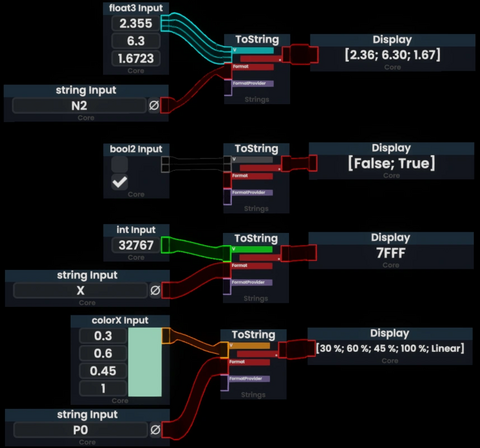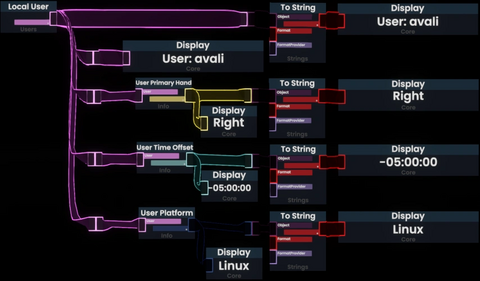add example for converting objects to strings |
m reword example caption slightly better |
||
| Line 37: | Line 37: | ||
== Examples == | == Examples == | ||
<gallery widths=480px heights=480px> | <gallery widths=480px heights=480px> | ||
File:Protoflux_example_to_string.webp|Four examples of | File:Protoflux_example_to_string.webp|Four examples of converting various primitives to string. Three of the examples use [https://learn.microsoft.com/en-us/dotnet/standard/base-types/standard-numeric-format-strings Standard Numeric Format Strings]. | ||
File:Protoflux_example_to_string_2.webp|Four examples of converting various objects to string. Note how, in general, the output matches what the display node outputs. | File:Protoflux_example_to_string_2.webp|Four examples of converting various objects to string. Note how, in general, the output matches what the display node outputs. | ||
</gallery> | </gallery> | ||
Revision as of 19:46, 13 January 2024
Script error: The function "ProtoFlux" does not exist.
Usage
You can use this node for turning values into strings, even an object. Turning an object into a string is useful for taking what you see in a display node for a value directly into a string object. You can also use this for huds, like turning your FPS into text for a display, or readouts of objects or values.
Inputs
V (Generic)
The value to turn into a string.
Format (String)
FormatProvider (IFormatProvider)
The locale to use for the output. Defaults to the invariant culture.
Outputs
* (String)
The value as a string following the format.
Examples
-
Four examples of converting various primitives to string. Three of the examples use Standard Numeric Format Strings.
-
Four examples of converting various objects to string. Note how, in general, the output matches what the display node outputs.

